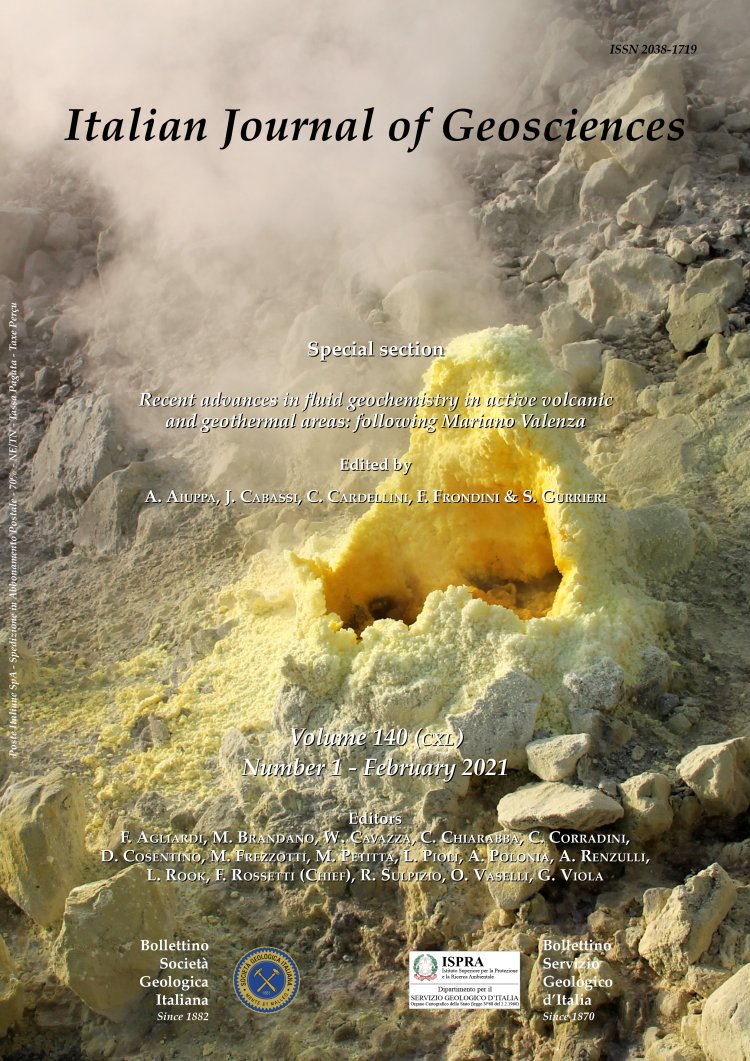

New insights into the degassing dynamics of Lago Albano (Colli Albani volcano, Rome, Italy) during the last three decades (1989-2019)
Dmitri Rouwet (1), Giancarlo Tamburello (1), Giovanni Chiodini (1), Giovannella Pecoraino (2), Monia Procesi (3), Tullio Ricci (3), Stefania Venturi (4,5), Alessandro Santi (4), Jacopo Cabassi (5), Orlando Vaselli (4,5), Franco Tassi (4,5) & Antonio Costa (1)
(1) Istituto Nazionale di Geofisica e Vulcanologia, Sezione di Bologna, Italy.
(2) Istituto Nazionale di Geofisica e Vulcanologia, Sezione di Palermo, Italy.
(3) Istituto Nazionale di Geofisica e Vulcanologia, Sezione di Roma1, Italy.
(4) University of Florence, Department of Earth Sciences, Florence, Italy.
(5) Istituto di Geoscienze e Georisorse, Consiglio Nazionale delle Ricerche (CNR-IGG), Florence, Italy.
Corresponding author e-mail: dmitri.rouwet@ingv.it
Volume: 140 (2021) f.1
Pages: 29-41
Abstract
With this study a nine-year hiatus (May 2010-April 2019) in the quantification of the CO2 content of Lago Albano by our working group has been resolved through the acquisition and analysis from two new field campaigns. Based on a CO2 budget analysis the dynamics of CO2 degassing throughout the past thirty years (1989-2019) is detailed and quantified. The decreasing CO2 content (expressed as dissolved inorganic carbon, DIC) in the lake, since the co-seismic CO2 input during the 1989-1990 seismic swarm beneath Colli Albani volcano, was accelerated at lake bottom layers (-140 m to bottom, near -160 m) in the 4-5 years after the swarm, continued afterwards at lower depths (-125 to -95 m), and seems to have reached steady-state conditions during recent years. The peculiar lake basin morphology has control on the degassing dynamics. The low chemical gradients detected during the April 2019 survey have induced near-zero degassing conditions, and arguably stopped the gas-self lifting process: Lago Albano might not become CO2-free in the future. This finding has implications for gas hazard when the next seismic swarm will hit the area. The updated degassing model also takes into account the lake level drop, and hence the volume decrease of Lago Albano, caused by excessive well pumping for anthropic purposes. This volume decrease appears to have a destabilizing effect on the degassing dynamics, which renders Lago Albano’s gas release less predictable in the future. Enhanced gas surveys (high-frequency and fine-scale spatial measurements) are needed to shed light on how Lago Albano degasses in this quiescent stage during the Anthropocene. A submersible infra-red detector to directly measure in-lake dissolved CO2 concentrations, applied satisfactorily during this study, is an adapted instrument to do so.
Keywords
Get Full Text